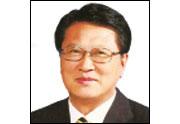In about three weeks, Korea will decide who will lead the nation for the next five years. Last week, the world witnessed the emergence of new leadership in China headed by Xi Jinping. Prior to that, President Barack Obama was reelected for his second term in the U.S. Japan is expected to experience a political reshuffle soon. As Northeast Asia begins to take steps toward a new era of economic and geopolitical uncertainties, remembering Korea’s history becomes all the more important. What is past, after all, is the prologue. We need to learn from it.
In 1880, amid a wave of the opening of modern Korea, Kim Hong-jip, an emissary to Japan from Korea’s last kingdom of Joseon, returned home with a book about a “secret plan for Korean strategy.’’ The book, titled “Chaoxian Celue” and written by Chinese Qing Dynasty councilor in Japan Huang Junxian, put forward several policies for Korea to cope with Russian expansion efforts. It suggested Korea should continue to pursue pro-China policies while allying with the United States and uniting with Japan.
According to historical accounts, after being briefed on this secret plan for Korean strategy, King Gojong of Korea was highly alarmed and set up a government office to exercise general supervision over diplomatic and business matters. In the meantime, Li Hongjiang, the highest official of the Chinese government, invited American and Korean emissaries to Tianjin which led to Korea forming a covenant with America.
Control of the Korean Peninsula and its surrounding waters was the main cause the First Sino-Japanese War of 1894 and the Russo-Japanese War of 1904. In both wars, Japan consecutively yielded victories. In 1905, right before the end of the Russo-Japanese War, U.S. Secretary of War William H. Taft met with Japanese Prime Minister Taro Katsura in Japan. At that meeting, the two signed a secret diplomatic memorandum now called the Taft-Katsura Agreement.
In 1924 The Current History Magazine of the U.S. carried an article written by Tyler Dennett about U.S. President Franklin D. Roosevelt’s Secret Pact with Japan. The article read: “The paragraph of the memorandum related to Korea. When invited by Katsura to express an opinion as to what policy Japan ought to pursue in the peninsula, the American is made to state that in his personal opinion, the establishment by Japanese troops of the suzerainty over Korea to the extent of requiring that Korea enter into no foreign treaties without the consent of Japan was the logical result of the present war and would directly contribute to permanent peace in the East.”
The New York Times article entitled “A Family Album Is One for the History Books,’’ written by Roberta Hershenson on Jan. 1, 2008, confirmed that Taft and Katsura reached an agreement that enabled Roosevelt to help mediate the Treaty of Portsmouth. The treaty formally ended the Russo-Japanese War of 1904-05 and won Roosevelt the 1906 Nobel Peace Prize. The Taft-Katsura memorandum, as it is known, allowed Japan to control Korea in exchange for its pledge not to interfere in the Philippines, which the United States had control of as a result of the Spanish-American War.
Should Korea have followed the advice of the Chinese councilor? Does history repeat itself?
The Korean Peninsula was where Russian and Japanese imperial expansionism clashed some one hundred years ago. After World War II, Soviet Union communism and U.S. containment policy violently clashed for the first time on the Korean Peninsula in 1950. The Korean War, a proxy conflict during the early period of the Cold War, lasted until 1953, and has left the peninsula divided into two hostile entities.
Dancing giants on the Korean stage, China, Japan, Russia and the U.S. are still exercising a certain degree of influence over Korean matters, particularly on the North Korean nuclear issue. How should South Korea adjust to the geopolitical and economic transformations that are reshaping the world in the 21st century?
The end of the Cold War in 1991 profoundly altered the international landscape. Having gone through a brief unipolar period, the world is now seeing the reemergence of China. It is a resurgent country. Global power is shifting from the West to the East. In the meantime, the U.S. has declared it will “pivot’’ away from two wars in Southwestern Asia to focus on the rising power of China. A series of new moves by the U.S. government reflect America’s concern over China’s growing influence in Asia. America’s focus on Asia in effect has been raising tensions with an ever more powerful China, which has been increasingly assertive in the region.
Chances of confrontations and clashes between China and the U.S. still exist. Fearful of a new containment policy, China may attempt to exclude the U.S. from Asian economic and security affairs. This move may similarly meet serious resistance from almost all other Asian states, which fear the consequences of a region dominated by a single power. It is desirable to see both China and the U.S. have a constructive relationship with each other and all other participants in Asia.
China is South Korea’s largest trading partner. The U.S. and South Korea, under a mutual defense treaty, are deeply committed to the defending of freedom on the Korean Peninsula. South Korea has to set her own priorities and deals with both China and the U.S. with more confidence and wisdom based on public consensus. South Korea’s foreign policy directives will be more apparent when it elects a new president on Dec. 19.
The writer is a chair professor of the Catholic University of Daegu. He previously headed the Foreign News Division of the Korea Overseas Information Service. His email address is shinhyungook@hotmail.com. <The Korea Times/Shin Hyun-gook>



